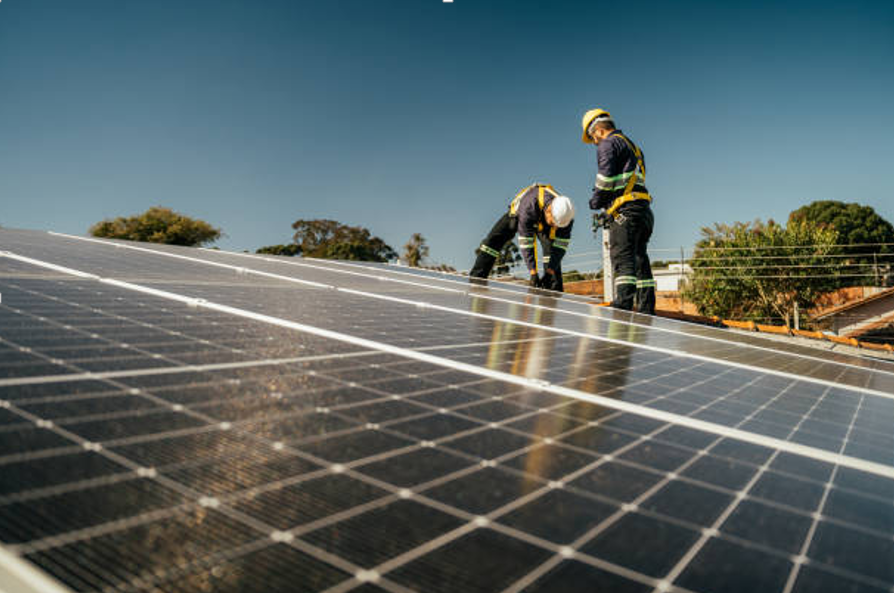Navigating the Seasons: A Guide to Off-Grid Systems for Ontario’s Climate

The climate in Ontario poses unique challenges to achieving energy independence with the use of renewable systems. With vast seasonal temperature variances from blistering summer to frigid winter in Ontario, the system design and planning need to be spot-on. It is crucial for you to be aware of these months and the effects of these climatic extremes in case you wish to switch towards forming a more sustainable energy solution. Everything you need is for you to get ready and there will be no success, unless it comes down with the weather.
Living off grid Ontario requires you to get a handle on understanding the various seasonal generation patterns. Within months, the province’s weather can change dramatically, leading to periods with lots of solar power generation and times when there is less power generation. Designing off-grid systems that work year-round may not sound tough, but with the right help, it is possible. Many property owners underestimate this planning, which can usually result in high-cost retrofits and, accordingly, stressful power shortages when it counts the most.
Winter System Design Challenges
Reduced Solar Output During Short Days: During the winter in Ontario, the days experience a much shorter amount of visible sunlight, and it is often cloudy, which will decrease the efficiency of solar panels by up to 80%. This, in turn, is exacerbated by snow accumulation on solar panels, leading to long periods during which solar generation grinds to a halt. Through those long, low-productive months, generally from November to February, your battery bank must cover for this. Finally, the winter sun angle changes and this should also be taken into account when dealing with the orientation of panels while initial installation planning.
Battery Storage Requirements for Cold Weather: Lithium systems are capable of capacity losses, while the more primitive lead-acid solution will become sluggish in sub-zero temperatures. That in turn means, catalyst or no, proper insulation and heating systems for battery enclosures are money well spent to guard against costly replacements and system failures. Such cooling monitoring systems safeguard your asset, and at the same time ensure that power never goes off. Long after the fact, significant numbers of property owners find out that their battery math did not subtract cold-weather capacity losses from the total it took them to cover the critical hours.
Generator Integration as Essential Backup: In the face of Ontario’s cold, windless winter months — when it would be impossible to meet demand with renewables — reliable backup generation becomes necessary too. While propane generators are ideal for cold weather since they perform the same in this type of weather, diesel generators are more efficient in fuel consumption and can offer a longer time frame between refills. When battery levels dip below certain pre-established thresholds, this should automatically trigger your backup system. Regular maintenance of generators during the winter season is recommended.
See also: The Influence of Tech on Modern Communication
Summer Energy Management Strategies
Maximising Peak Generation Periods: The summer months are a time when solar generation is prolific, with the length of daylight hours and heavy solar radiation, which lead to an excess production of energy. This extra capacity is used to charge batteries, heat water and power heavy loads which can be scheduled during the peak generation hours. These systems help to shift power demand and load distribution according to generation patterns. Your system can easily produce anywhere from 300-400% more power in July than it does on the average December day!
Cooling Load Considerations: In the hot, humid summers of Ontario, air conditioning and cooling systems place significant load demands on undersized electrical systems. Cooling strategies already pay for themselves in the long run, keep your living space cool and comfortable, and there are many tips that can show you how to increase ventilation or better insulate your home for no additional financial burden. You can use a heat pump efficiently as well for heating, so not just in the form of an AC. But energy-efficient appliances are important when every watt counts towards your daily power usage and budget.
Insulation and Energy Efficiency
Superior Insulation Standards: High-performance insulation dramatically reduces heating and cooling loads, allowing smaller renewable energy systems to effectively meet comfort requirements. This is different from spray foam, which provide thermal barriers- reducing energy waste; or even advanced fibreglass systems and rigid foams. Air sealing works with insulation to eliminate these paths, rendering void air spaces more energy efficient. Often, investing in better insulation pays back more than buying more solar panels or batteries.
Building Envelope Improvements: Potential weak spots in your thermal envelope that could result in significant energy waste include windows, doors, and ventilation systems. Insulated doors and triple-pane windows lower system loads all year long while maintaining interior temperatures. Without causing undue heat loss, controlled ventilation systems maintain the quality of indoor air. These enhancements continuously and silently lower your energy consumption needs.
System Sizing and Load Management
Calculating Seasonal Energy Requirements: To avoid system undersizing, seasonal variations in energy consumption and generation capacity must be taken into consideration in accurate load calculations. Heating loads, decreased solar output, and battery capacity losses due to cold temperatures should all be factored into winter calculations. Cooling needs and possible equipment efficiency losses due to high ambient temperatures must be taken into account during summer assessments. For precise system sizing, professional energy audits offer comprehensive consumption data.
The following are important factors for year-round system reliability:
- Battery bank sizing should account for 5-7 days of autonomy during winter low-generation periods to prevent power shortages.
- The generator’s capacity must sustain peak loads during extended cloudy weather while maintaining battery charging capabilities.
- The startup surges from compressors and motors, which are commonly found in heating and cooling equipment, should be considered when sizing the inverter.
- Through the provision of real-time data on generation, utilisation, and battery condition, monitoring systems optimise daily energy management decisions.
Conclusion
Planning for Ontario’s various seasons requires careful consideration of generation patterns, consumption demands, and solar panel equipment performance in extreme weather. In order to maintain reliable power delivery throughout the year, your off-grid system must be able to endure harsh winters and scorching summers. Success depends on proper sizing, high-quality parts, and regular maintenance schedules that are modified to account for seasonal demands. Take immediate action to ascertain your property’s unique requirements for off-grid and net metering and design a system that provides total energy independence in any cl





